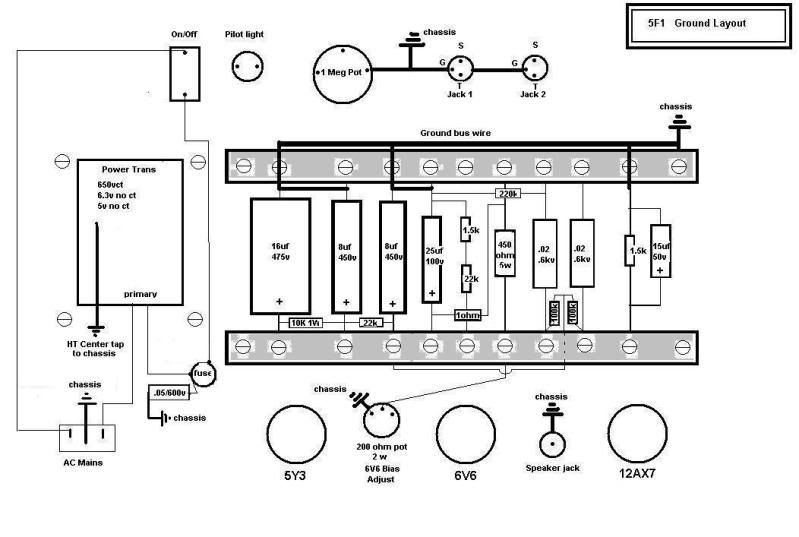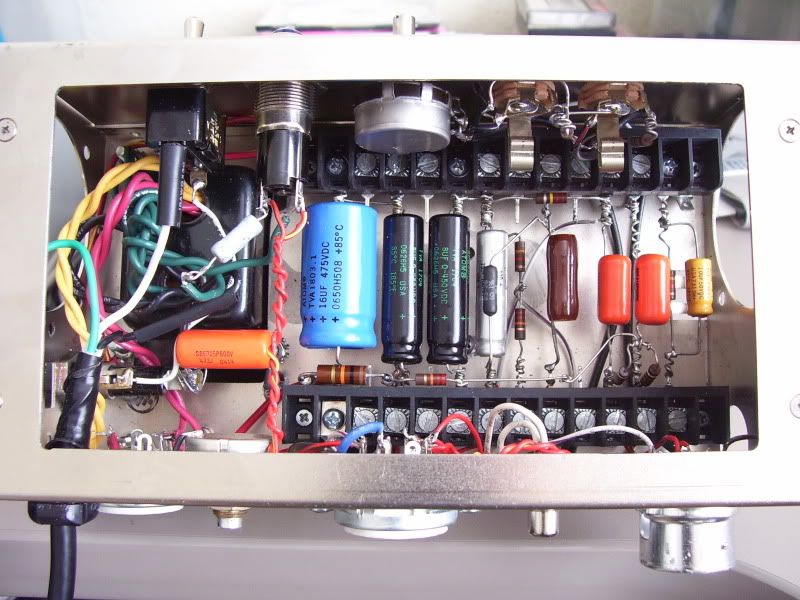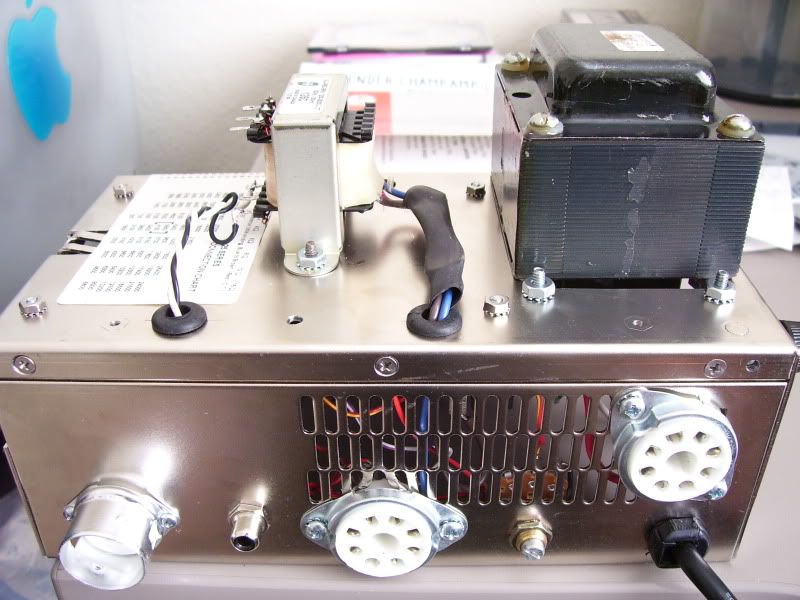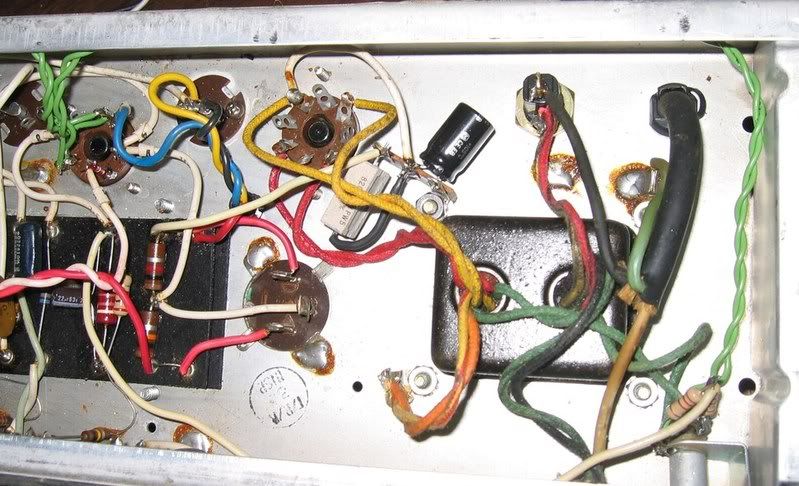maxwall
Well-known member
- Joined
- Nov 17, 2004
- Messages
- 1,134
I finished a 5F1 guitar amp build that looked to be a easy and fun project and I can't figure out why the power transformer secondaries are so high.
Its passing audio fine.
Dealing primarily with hum issues and a new speaker crackle , but I think the speaker crackle may be due to elevated dc voltages on tubes plates etc.
The transformer being used is a New Sensor NSC125P1B
specs 325-0-325(650vct) 70ma, 6.3v 2a, 5v 2a
line voltage 60hz @ 122 vac measured with dmm
seconadary - measured
HT 351-0-351 ( ~700vct ) ??? Much too high.....
heaters 6.9vac no center tap - easily fixed with a 1 ohm dropping resistor
rectifier heater 5.3vac - not terribly worried about this one.
the elevated HT secondaries are jacking up voltages all over the circuit by as much as 50Vdc
Here are voltages on the output and preamp tubes
6V6- voltages
pin 3 (plate) 402vdc
pin 4 (grid2) 363vdc
pin 8 ( cathode ) 20.62vdc
12ax7- voltages
pin 1 (plate1) 216vdc
pin 6 (plate2) 211vdc
pin 3 (cath2) 1.45vdc
pin 8 (cath1) 1.27vdc
5y3 - voltages
pin 4-6, 351vac on each leg ( approx 700 vac, should be 650 vac) a bit high , may need a dropping resistor here.
pin 2-8, 5.3vac
pin 8 to first filter cap 16uf/475 cap is 409 vdc
here is the original 5F1 schematic
http://img.photobucket.com/albums/v611/maxwall/5f1_layout.jpg
Diagram of my grounding scheme and actual layout, pics below



Is the transformer bad ? really out of spec ?
Could sure use some help
Its passing audio fine.
Dealing primarily with hum issues and a new speaker crackle , but I think the speaker crackle may be due to elevated dc voltages on tubes plates etc.
The transformer being used is a New Sensor NSC125P1B
specs 325-0-325(650vct) 70ma, 6.3v 2a, 5v 2a
line voltage 60hz @ 122 vac measured with dmm
seconadary - measured
HT 351-0-351 ( ~700vct ) ??? Much too high.....
heaters 6.9vac no center tap - easily fixed with a 1 ohm dropping resistor
rectifier heater 5.3vac - not terribly worried about this one.
the elevated HT secondaries are jacking up voltages all over the circuit by as much as 50Vdc
Here are voltages on the output and preamp tubes
6V6- voltages
pin 3 (plate) 402vdc
pin 4 (grid2) 363vdc
pin 8 ( cathode ) 20.62vdc
12ax7- voltages
pin 1 (plate1) 216vdc
pin 6 (plate2) 211vdc
pin 3 (cath2) 1.45vdc
pin 8 (cath1) 1.27vdc
5y3 - voltages
pin 4-6, 351vac on each leg ( approx 700 vac, should be 650 vac) a bit high , may need a dropping resistor here.
pin 2-8, 5.3vac
pin 8 to first filter cap 16uf/475 cap is 409 vdc
here is the original 5F1 schematic
http://img.photobucket.com/albums/v611/maxwall/5f1_layout.jpg
Diagram of my grounding scheme and actual layout, pics below



Is the transformer bad ? really out of spec ?
Could sure use some help

































